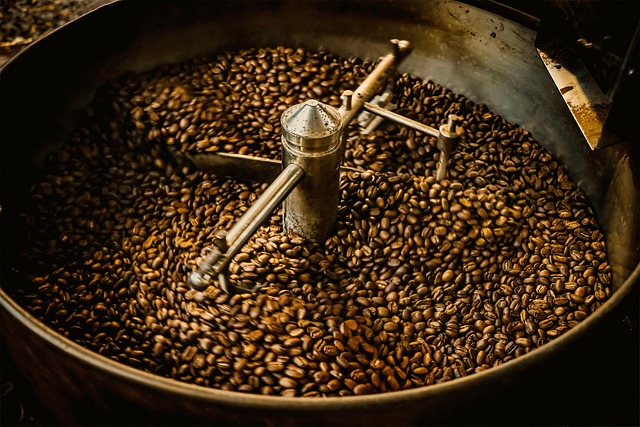When we think of protein in the context of a healthy lifestyle, the focus often lands on anabolic processes—building muscle, repairing tissue, and fueling growth. Yet the complementary side of the equation, catabolic processes, is equally vital. Catabolic processes break down complex molecules into simpler forms, releasing energy and providing the raw materials necessary for cellular maintenance. Understanding how these processes interact with nutrition and exercise can help us create a balanced strategy that promotes muscle preservation, efficient metabolism, and overall well‑being.
The Science Behind Catabolism
Catabolism is the body’s natural mechanism for extracting usable energy from nutrients. In the realm of protein, catabolic pathways convert amino acids into energy or feed them into biosynthetic routes that support other cellular functions. The key drivers of catabolic processes include hormonal signals—such as cortisol and glucagon—nutrient availability, and energy demand. When the body perceives a deficit, it accelerates catabolic activity to maintain homeostasis.
- Hormonal regulation: cortisol, growth hormone, insulin
- Metabolic cues: glycogen depletion, low blood glucose
- Environmental stresses: cold, exercise, illness
Protein Catabolism and Muscle Preservation
Muscle tissue is a primary sink for amino acids during periods of fasting or extended training sessions. Catabolic processes mobilize proteins from skeletal muscle to meet energy needs or to support immune responses. While this is a normal physiological response, chronic or excessive muscle catabolism can lead to weakness, impaired performance, and increased injury risk.
“An optimal balance between protein synthesis and breakdown is the cornerstone of longevity and functional strength.”
Catabolic Processes and Energy Balance
Energy balance—calories consumed versus calories expended—is the overarching framework that governs catabolic activity. When caloric intake falls short of expenditure, catabolic processes intensify to fill the gap. Conversely, a positive energy balance can suppress unnecessary protein breakdown, allowing more resources for tissue repair.
- Monitor intake: 2000–2500 kcal for moderate activity
- Track expenditure: incorporate both aerobic and resistance training
- Adjust macros: ensure sufficient protein (1.2–1.6 g/kg body weight) to buffer catabolic rates
Nutrient Timing to Modulate Catabolism
The timing of protein and carbohydrate consumption can significantly influence catabolic flux. Consuming a protein‑rich meal shortly after exercise helps shift the balance toward anabolic pathways, thereby reducing muscle breakdown. Similarly, a pre‑sleep protein snack can mitigate overnight catabolism.
Practical tips:
- Post‑workout window: 30–60 minutes
- Pre‑bedtime: 20–30 g of casein or whey
- Intra‑day snacks: lean meats, legumes, or dairy for steady amino acid release
Lifestyle Factors Influencing Catabolic Activity
Beyond diet and exercise, several lifestyle choices modulate catabolic processes. Chronic stress elevates cortisol, a potent catabolic hormone. Inadequate sleep can also trigger metabolic shifts that favor protein breakdown. Ensuring a holistic approach to health can temper unwanted catabolic spikes.
“Stress management and sleep hygiene are as essential to muscle health as nutrition and training.”
Practical Dietary Strategies to Counter Catabolism
Strategic dietary patterns can harness catabolic processes for beneficial outcomes while preserving lean mass.
- High‑quality protein sources: chicken, fish, tofu, beans
- Complex carbohydrates: oats, sweet potatoes, whole grains for sustained energy
- Healthy fats: omega‑3s, monounsaturated fats to support hormonal balance
- Hydration: 2–3 liters per day to support metabolic clearance
Exercise and Catabolic Regulation
Resistance training is a powerful anabolic stimulus, but it also induces a temporary surge in catabolic enzymes that degrade muscle fibers. This microdamage is the first step toward muscle growth; the subsequent repair phase is where nutrition plays a pivotal role. Adequate protein intake during this window signals the body to rebuild stronger, thereby neutralizing excessive catabolism.
Key points for athletes:
- Split training sessions to allow recovery periods
- Include rest days to enable protein synthesis to outpace breakdown
- Utilize periodization to manage overall catabolic load
Sleep and Recovery: The Unsung Ally
Sleep is the body’s natural recovery phase, where growth hormone secretion peaks and protein catabolism diminishes. Chronic sleep deprivation impairs these processes, leading to a net loss in lean tissue. Prioritizing 7–9 hours of quality sleep each night can significantly blunt unwanted catabolic activity.
Integrating Catabolic Knowledge Into a Healthy Lifestyle
By appreciating how catabolic processes function and how they can be modulated, individuals can design lifestyles that maintain muscle integrity, optimize metabolism, and support overall wellness. This integrative approach involves balanced nutrition, strategic training, adequate rest, and stress control—all converging to keep catabolic activity in a healthy range.
Conclusion
Catabolic processes are a natural, essential part of human physiology. Rather than viewing them as purely negative, we can learn to steer them toward constructive outcomes. With mindful nutrition, purposeful exercise, and holistic lifestyle habits, we can harness catabolic activity to fuel healthy protein metabolism, support a strong body, and promote long‑term vitality.



